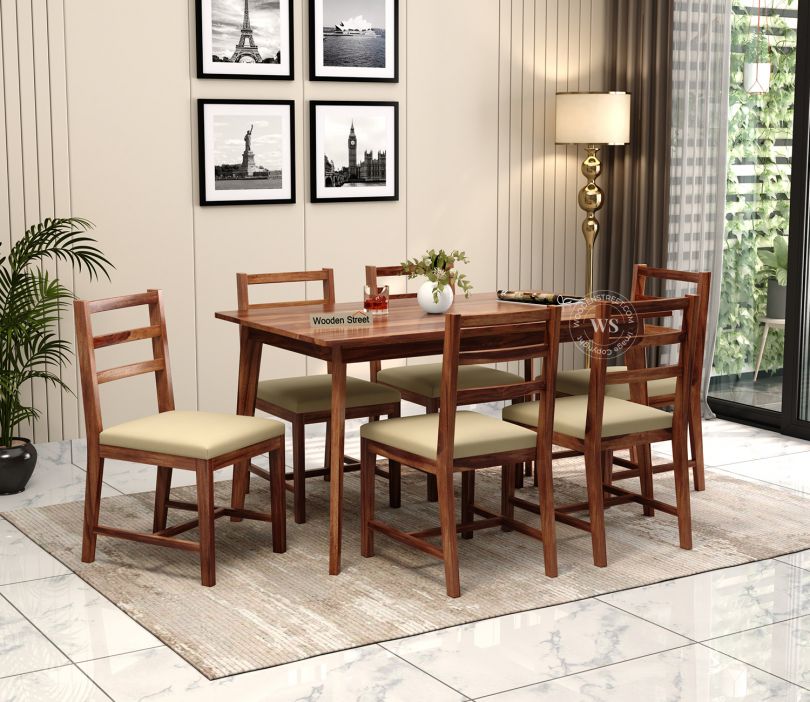The dining table holds a special place in every home. It is not just a functional piece of furniture but also a symbol of connection, gathering, and shared memories. From large family feasts to quiet evening meals, the dining table often becomes the heart of daily living. Over the years, dining table styles have evolved, reflecting changes in design, culture, and lifestyle. From classic elegance to modern minimalism, each style tells its own story. Understanding these styles can help you choose the perfect table that matches your space, needs, and aesthetic.
The Timeless Charm of Traditional Dining Tables
Traditional dining tables carry with them the weight of history and heritage. These styles are deeply rooted in craftsmanship, ornate detailing, and the use of solid materials like wood. Carved legs, rich finishes, and grand proportions often define this category. Many traditional designs are inspired by historical European styles, such as Victorian or Colonial, and are meant to last generations.
This kind of dining table brings a sense of permanence and sophistication. It suits larger spaces and works well in formal dining rooms where elegance is key. The emphasis is on balance, symmetry, and fine details, often matched with high-back chairs and elaborate lighting to complete the look.
Transitional Designs That Bridge the Gap
Not quite traditional and not entirely modern, transitional dining table strike a perfect balance between old and new. These designs combine the warmth of classic woodwork with the simplicity of modern lines. It is a style for those who love the familiarity of traditional elements but appreciate the clean, uncluttered nature of contemporary interiors.
Transitional tables are known for their versatility. They can blend into many interior styles without feeling out of place. Whether you live in a city apartment or a suburban home, a transitional dining table offers comfort, functionality, and an aesthetic that evolves with your taste.
Exploring the Rise of Contemporary Styles
Contemporary dining tables reflect the spirit of the present moment. Clean lines, geometric shapes, and innovative materials define this modern style. There is a shift away from ornate decoration toward simplicity and practicality. Contemporary designs often use materials like glass, metal, engineered wood, or even concrete to create a sleek and sophisticated look.
One of the most popular characteristics of a modern dining table is its adaptability to different lifestyles. These tables can be minimal for small spaces or bold and artistic to serve as a focal point in an open-plan setting. The emphasis is on smart use of space, functional design, and a visually light feel that complements modern interiors.
The Influence of Minimalism on Dining Table Design
Minimalism has taken over many areas of interior design, including the dining space. A minimalist dining table is all about reducing clutter and keeping only what is essential. These designs usually come in monochromatic tones, feature simple rectangular or round shapes, and prioritize quality over quantity.
Minimalist dining tables are perfect for people who enjoy clean aesthetics and wish to maintain an open and airy atmosphere in their dining area. This style also aligns with sustainable living as it often promotes thoughtful choices and timeless appeal rather than trend-driven decisions.
Industrial and Urban Dining Table Concepts
Inspired by urban lofts and warehouse conversions, industrial-style dining tables bring an edgy and raw character to the room. Typically made with a mix of metal and reclaimed wood, these tables celebrate imperfections and natural textures. Their rugged charm works best in modern apartments or homes with exposed architectural elements like brick walls and steel beams.
This style of dining table often becomes the centerpiece of a room, combining utility with a strong design statement. It is ideal for creative individuals who love blending the past with the present in unexpected ways.
The Return of Retro and Vintage Styles
Design is cyclical, and vintage or retro dining table styles are making a comeback. From mid-century modern to art deco inspirations, these styles carry a nostalgic charm. Angular legs, vibrant tones, and mixed materials characterize these tables, offering a playful yet stylish aesthetic.
Choosing a vintage-inspired dining table allows homeowners to infuse personality and history into their dining space. It can also act as a conversation starter, especially when paired with matching chairs or decor elements that echo the same period.
Customizing Styles to Fit Your Lifestyle
While understanding different dining table styles is important, the final choice often comes down to personal preference and daily needs. Some households may require extendable tables for hosting guests, while others may prefer compact tables for quick meals. The size of the dining area, the number of people using it, and the overall interior theme all influence the decision.
Choosing a dining table is not just about looks. It is about finding a piece that enhances your everyday routine, accommodates your lifestyle, and expresses your personal taste. Whether you are drawn to the elegance of traditional tables or the simplicity of modern ones, what matters most is how it fits into your life.
Conclusion
The journey from classic to contemporary dining table styles reflects the evolution of living spaces and human interaction. Each style, whether rooted in tradition or inspired by modern design, has its unique appeal and purpose. Understanding these styles helps in making a well-informed decision that suits your space and lifestyle.
A dining table is more than a surface to eat on. It is where stories are shared, ideas are exchanged, and moments are made. So, take the time to explore different designs and choose the one that feels right for your home. Whether it is classic, contemporary, or somewhere in between, the right dining table can truly elevate the way you live and dine every day.
